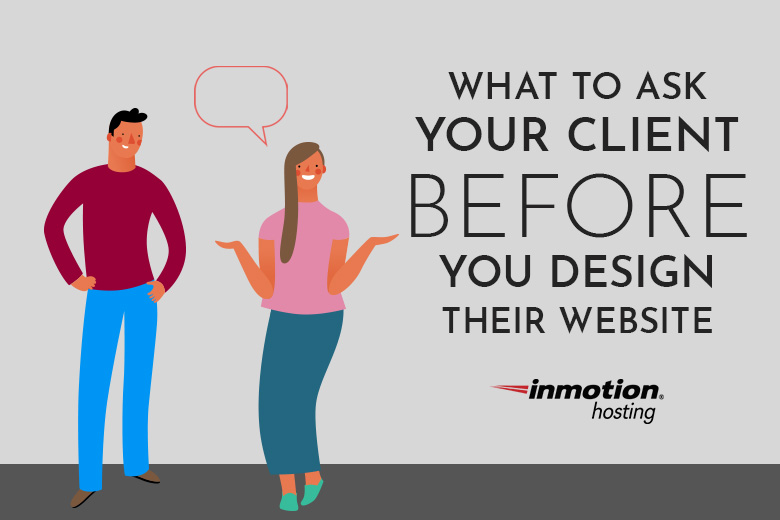
Think you know what your client wants? Think again. It might seem ideal when the client says, “Do whatever you want,” but it’s better to go in with a plan.
Why? Because when you go in without a plan, you leave yourself open to delivering something the client absolutely does not want. And that means revisions (lots of them).
Asking the Right Questions for Website Design
So how do you make sure the client gets what they want the first time around? Ask pointed questions, in language they can understand. Show examples if necessary. But never begin before you have all the answers!
Here are 10 crucial questions to ask before you get started:
- What does your business do?
One of the biggest problems that can come up during the web design process is a disconnect between what the designer thinks the client wants and what the client actually wants. Do a little research on your own prior to meeting the client – but make it a point to also ask them about their business. Keep in mind that their current website may not be an accurate representation of their brand and that’s why they want a new one.
2. Do you already have a website? Why do you want a new one?
In keeping with the same theme, if the client already has a website and doesn’t like it, find out why. Is it because the copy is poorly written? The site is too complicated? Their business has changed? Or is it just poorly designed?
3. What are your goals for the site?
This is an absolute must, as what they plan to do should greatly influence the design of the site. For example, if they’re primarily looking to write a blog, the design would be different than if they were planning on running an e-commerce store. Understanding the end goal will help you lay the proper foundation.
4. Who is your target audience?
Another highly important question, this will help you understand the type of people your client wants to reach. Because different people respond to different things, a site designed to reach college-aged consumers would look totally different than a site designed for a working mom looking for productivity tips.
5. What type of content do you want to share?
For example:
- A personal blog
- Product review videos
- Professional photography
- Podcasts
- Case Studies
When you know what kind of content the client wants, you can create a design that better suits their needs (particularly the layout).
6. What actions do you want your visitors to take?
On the same sort of note, you should find out what actions your client wants visitors to take. For instance, if they’re sharing product reviews, their goal may be to get clients to click on their affiliate link. Other choices might include:
- Buy a product or service
- Register for an event
- Fill out a form
- Share a blog via social media
- Click on an opt-in
As a designer, your number one job is to get web visitors to take the desired action.
7. What feel do you want?
When it comes to branding, businesses typically want to give off a certain “vibe.” It might be fun and whimsical, or it might be serious and professional, but it’s always meant to attract a particular audience. Knowing what feel a client is going for will give you a better idea of how to design their site, especially when it comes to color palette and typography. Which leads us to…
8. Do you have any colors in mind?
On occasion, a client will enter the design process with very strong ideas about the colors they’d like to use. Sometimes they will be great and will provide you with a strong starting point, and sometimes they won’t mesh with the desired vibe and you’ll have to make alternate suggestions.
9. Do you already have imagery you’d like to use?
Ask the client if they have any photos, videos, or illustrations they’d like to include in the initial design. Typically, they’ll already have a company logo, headshots, or even behind-the-scenes video they’d like to share. As the designer, you have to ensure that they are of a high enough quality to be included on the site. Sometimes, you’ll have to refer the client to a photographer or graphic designer for new images.
10. What three competitor websites do you admire?
This is a great final question because it not only gives you a better idea of the style your client enjoys, but it’s a good chance for you to see what works for the competition. For example: it’s safe to bet that if a high-earning company in the same industry shares weekly how-to videos, that might work for your client as well. This is a good opportunity for you to make some final suggestions based on your findings.
Final Thoughts
When you go into the web design process prepared, it’s much more likely that your client will get a finished product that they love. This will not only leave them happier but will save you countless hours on revisions!
Do you use a client intake form in your web design business? Did we leave out any questions that you think are must-haves?